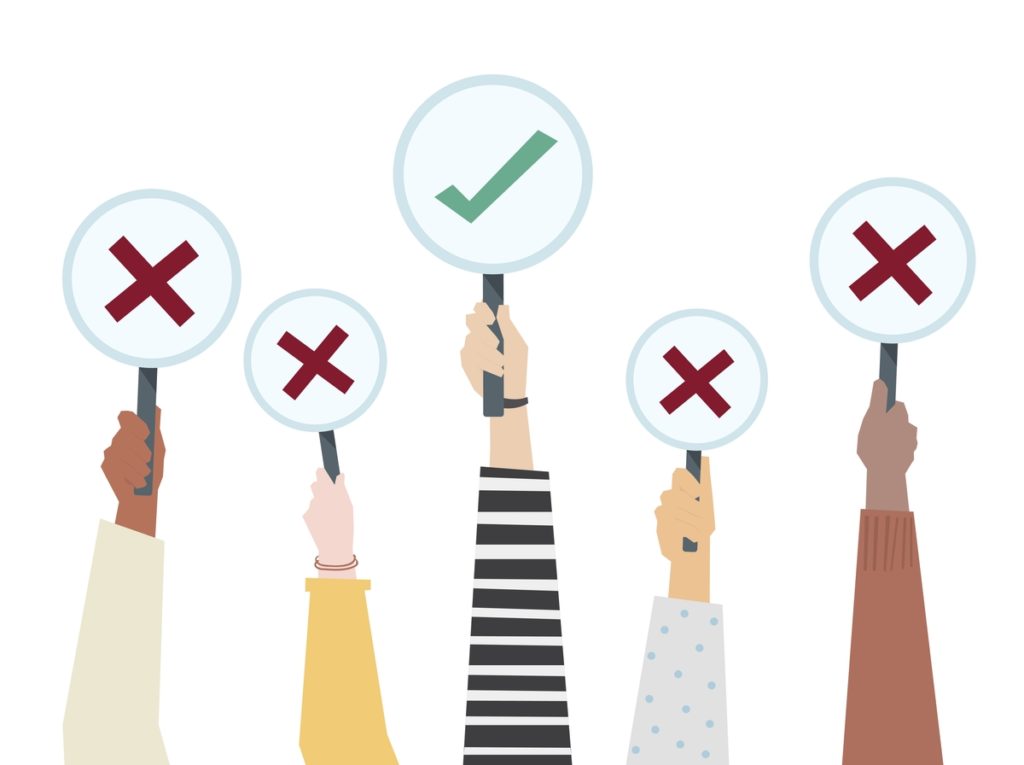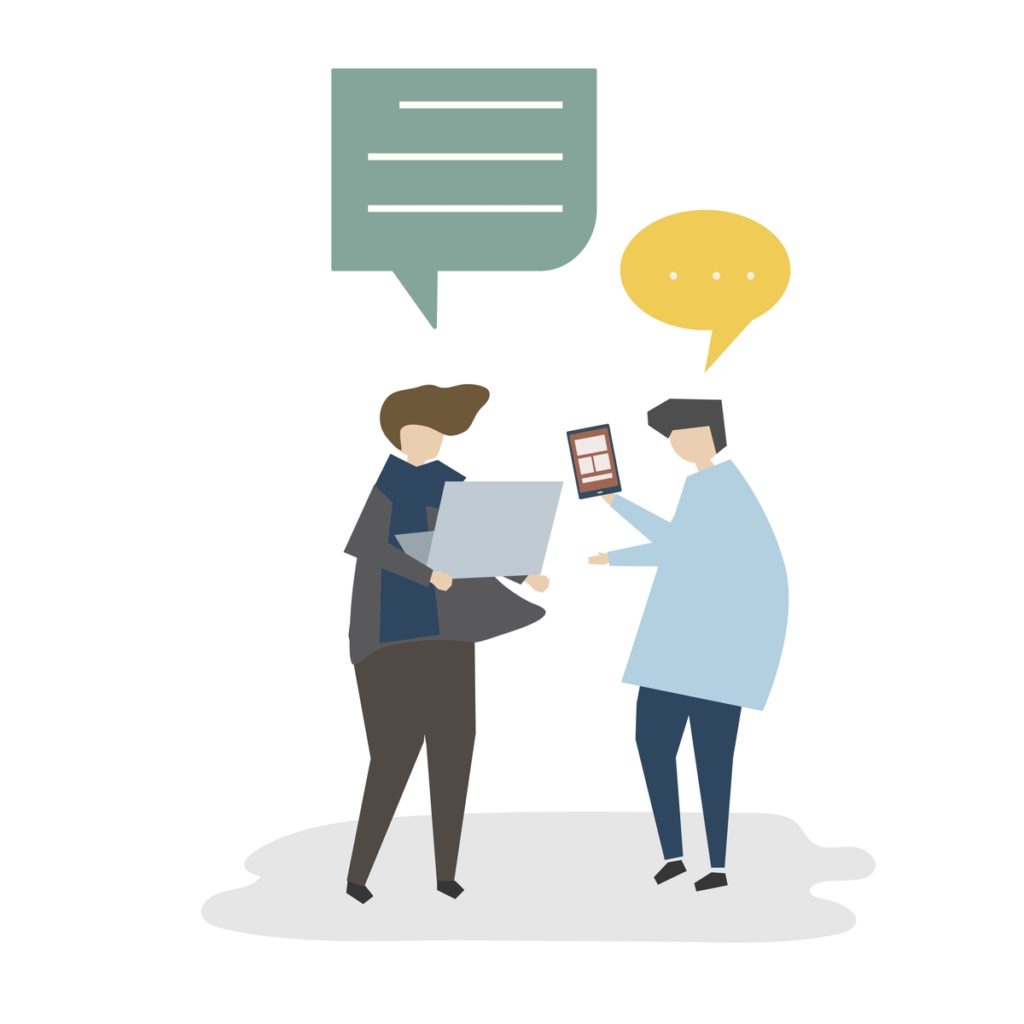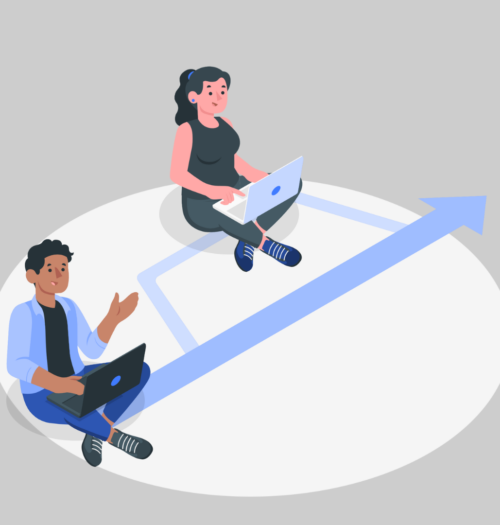How to Calculate the Response Rate of your Survey



According to a recent study done by Microsoft, 54% of customers reported that they have higher expectations when it comes to customer service than they did one year ago. With expectations higher than they’ve ever been, and rising, it’s more important than ever to know exactly how satisfied your customers are – and how to calculate response rate of your activities.
When it comes to customer service teams, no business ever “arrives”. There is always room to grow. The most successful businesses are the ones that are constantly striving to improve their customer experience.
A customer survey is a great place to start. It will provide you with valuable data straight from your customers about where your business is falling short, what strengths to capitalize on, and what can be improved. But in order for a customer survey to be effective, you have to get customers and prospects to take it.
Of course, customers aren’t the only ones you need for taking surveys. Your business may want insight into employee satisfaction and the general state of operations, in which case an internal survey could be the perfect tool. In either case, it’s important to understand how survey response rates work and how they can be optimized within quiz makers.
What Is A Survey Response Rate?
More survey responses means more data, which leads to more accurate assessments. When it comes to the survey responses, however, you will want more than just a large number of them.
You also need a high percentage of people who respond. Why? A low response rate, even from a large sample size, means you might not be getting a good cross-section of your target sample. In other words, your data could be biased. A higher response rate generally corresponds to higher quality data. How to calculate response rate, then?
The survey response rate is the percentage of surveys that are completed out of everyone the survey was sent to (the survey recipients). For example, if you sent a customer survey invitation to 100 people, and 50 of them completed the survey, your survey response rate would be 50%
Here’s How To Calculate Response Rate in Surveys
To calculate the survey response rate, you divide the number of responses by the number of recipients and then multiply by 100 to get a percentage.
Sounds straightforward, right?
In the case of in-person surveys, it is, but things can sometimes get a little more complicated when it comes to email marketing and web surveys. For example, if you send a survey by email, would you consider bounced email addresses to be “recipients”? What about unopened emails?
In the case of online surveys, would you consider every visitor to your webpage a “recipient” of the survey? If you do, you are bound to have a very low survey response rate. In these situations, it might be better to calculate the survey completion rate as opposed to the survey response rate.
The survey completion rate is calculated by dividing the number of people who completed the survey by the total number of people who began taking the survey. In other words, if 100 people started filling out your survey but 50 people abandoned it at some point and the other 50 completed it, your survey completion rate would be 50%.
Typical Survey Response Rates and Benchmarks
The average survey response rate is only about 33%. This number varies wildly, however, depending on what kind of survey it is, what method you are using and whether it’s for customers or employees. For employee surveys, response rates can improve when recognition is part of the process, and linking responses to meaningful appreciation through employee rewards software can help encourage more honest and frequent participation.
For example, B2B surveys usually see an average of 12% higher response rates than B2C surveys. In-person surveys see some of the highest response rates with 57% being the average. Surveys by mail come in second place with an average response rate of 50%. Internal employee response surveys have about a 20% higher response rate than customer surveys.
But who wants to be average? To get the most accurate data, you will want to shoot for a survey response rate above 80%. It is definitely achievable if you follow the tips below.
How To Improve Your Survey Response Rate
Whether you are about to embark on your very first survey campaign or you’ve been sending out surveys for years, you’ll want to ensure you get the highest response rate possible. There are more distractions than ever before vying for the attention of employees, customers, and prospects. Make sure that your survey stands out with these tips.

Consider Changing the Trigger
The trigger is the action on the part of the survey recipient that causes them to be given a survey. There are endless possible survey triggers. A survey could be given to every individual who walks through the door of your business, to every person who signs up for email updates, or to every customer who makes an online purchase or contacts customer service through your call center.
In general, the higher the level of connection that the customer has had with your business, the more likely they will be to complete a survey.
Timing is also an important consideration. Although it is good to cast a wide net with surveys to avoid sample bias, if you send a survey to everyone on your email list, you are likely to end up with a very low response rate.
To get the highest response rates, you will want to target those that have just made a purchase or just received a shipment. Right after making a purchase people are usually feeling excited and will be more motivated to share a positive experience or explain issues in order to help other customers. The feedback that is given right away is generally about 40% more accurate than customer feedback given even just 24 hours after an event.
Make It Shareable
An easy way to get more survey responses is to share your survey on social media and allow other respondents to share it. This works well if you are offering an incentive to fill out the survey. By the way, offering incentives is another tip to improve the response rate. See more on that below.
The benefit of sharing a survey through social media management tools is that you are more likely to end up with a wide variety of responses and a high number of responses. Keep in mind though that it may be difficult in this situation to determine who is a survey “recipient” for response rate calculations, so you may want to track the survey completion rate instead.
Change the Survey Design
With all of the distractions of modern life, if you want people to fill out your survey, it needs to stand out and have an effective survey design.
The design should be eye-catching in order to draw in the recipient and grab their attention away from everything else on their phone and in their feed. As far as the survey questions go, you should aim to ask questions in a variety of ways.
If all of the questions are multiple-choice, your survey starts to look more like an exam. If all the questions are short-answer, it will seem too time-consuming. Try to mix it up as much as possible by using multiple-choice, short answer, and Likert scale questions. Make sure that the content is clear and easy to read and doesn’t require a lot of clicks or second read-throughs.
Use human language and even humor if it’s warranted. Make your survey engaging and interactive. The more “game-like” it is, the more likely people are to take it and complete it.
You can also make your surveys customized to fit various demographics. You can have different external surveys for different customer segments or different triggers. Perhaps those customers who are filling out a survey after customer service interactions could be asked different questions than those filling out a post-purchase survey. People are more likely to enjoy something that feels customized to their experience.
Don’t Require Personal Biodata
Try to avoid asking for a lot of personal information. Many people will be wary about filling out a survey that requires personal information like their address and phone number. If you can give them an option to leave it out or fill out the survey anonymously, you will not only improve your survey response rate, but you are likely to get more candid responses.
Avoid Lengthy Surveys
The saying that time is our most valuable resource has never rung more true. The COVID pandemic has shown us that it does matter where our time is spent and that money isn’t everything. Make sure that your survey can be completed in five minutes or less. Two or three minutes is ideal. Studies have shown that if a survey takes longer than five minutes to complete or has more than 12 questions, the response rate will drop by about 15%.
Consider Changing the Audience
Different types of audiences will usually have different response rates, even with the same exact survey. If you’ve been sending your survey to your social media followers, you may want to switch it up and send it to customers. If you’ve been sending it to customers already without much luck, you may want to try an employee survey. Employee surveys generally get higher response rates by about 20%.
Just like in digital marketing, when administering your survey, you want to be intentional about your audience. Think about who your target audience should be. Who has the answers to the questions you’ve been asking? Who is in the best position to give you the data you need to move forward?
Sometimes simply replacing the audience can make all the difference when it comes to the survey response rate.

Increase Visibility
If you want to increase your survey response rate, you need to ensure that your target audience sees the survey. Make sure you are sharing it with them on the right channel without overwhelming them with spam. If your customers are more responsive to emails, send out an email survey. If they interact more via text, send it in a text message. If you have some in each category, segment your customers so that you can reach everyone on their preferred communication channel.
Incentivize Survey Respondents
It is sometimes difficult to get people to do something when they know they aren’t getting anything in return.
Putting the time and effort into filling out a survey can feel like a chore. Even worse, it can feel like you are taking time away from something else such as family, work, or recreation. If you incentivize recipients with a monetary reward, suddenly your survey seems like five minutes well spent.
Having an incentive can increase your response rate by 10 to 15% depending on what the incentive is and how attracted your target audience is to that incentive. Also, the incentive should be related to the survey topic.
There are two types of rewards you can offer your recipients: intrinsic and extrinsic. Intrinsic rewards are rewards that are internal, such as a feeling of accomplishment. You can give recipients an intrinsic reward by reminding them how thankful you are for their responses and how much care you will take in reading through the responses and making changes accordingly.
Extrinsic rewards refer to tangible rewards such as cash, coupons, discounts, etc. Entering survey respondents into a drawing for a large prize is another example of an extrinsic reward, but be wary about using this tactic. Studies have shown that giving a small reward to every respondent works better than giving a large reward to a few.
Give Your Recipients Purpose
Speaking of intrinsic rewards, you can convince more recipients to complete your survey when you give them a sense of purpose and show them how completing your survey fits in with their personal values. How could filling out a customer survey fit in with an individual’s deep-seated values, you ask? In more ways than one.
Most people value helping others and contributing in a meaningful way to society. Filling out your survey fits perfectly in line with this value because respondents will be helping others avoid the pain points they may have gone through. If the recipient has nothing but positive things to say about your business, they can help steer others away from your competitors. If they have concerns about the service they received, they can be part of the solution by completing the survey.
Consider Building A Survey Panel
A survey panel is a group of people or customers that you essentially keep on retainer to complete surveys whenever you have them. Although it requires more work, time, and resources, you can end up with a group of people that is the perfect cross-section of your target audience and gives you the data that you need quickly. You will also have the ability to conduct further interviews and ask deeper questions if you need to.
Send Reminders….But Not Too Many
Everyone is being pulled in a lot of different directions at any given period of time. We all need reminders from time to time. One study showed that with a few gentle reminders and follow-up messages, response rates increased by up to 36%.
While it is good to send some well-worded reminders, avoid spamming your customers or making them feel like they dropped the ball. You will want to send out two to three gentle reminders. Each reminder should have different wording and be personalized to the recipient as much as possible.
Best Types of Questions to Improve Survey Response Rate
Now that you have a few strategies to increase your response rate, here are some question formats that you will want to include in order to have the best outcome possible.
Likert Scale Questions
Likert scale questions are questions that ask respondents to rate their answers on a 3, 5, or 7-point scale. The reason for the odd number is so that there can be a middle or neutral response. Likert scale questions are those that ask things like:
“How satisfied were you with the service?”
5 – Very satisfied
4 – A little satisfied
3 – Neutral
2 – Disappointed
1 – Extremely disappointed
Likert scale questions are great for surveys because they are easy to understand and give recipients the feeling of freedom of expression without being overwhelmed. If you want to know how to calculate response rate in your surveys, this could be a good starting point.
Close-Ended Questions
Close-ended questions are those that have a choice between two or three given responses. Usually, these are yes/no or true/false questions. Some close-ended questions are good to have on a survey because they are straightforward, give unbiased data and can be answered quickly by recipients.
Rating Scale Question
Rating scale questions have respondents rate their answers on a scale. It could be 1-10, 0-5, or even 1-100.
Rating scale questions are good for different types of surveys because they are more interactive for respondents while giving researchers the ability to analyze consumer preferences and priorities.
How to calculate response rate so you can improve your performance?
The number of surveys given to consumers has increased drastically in the last decade. This trend is likely to continue. With the demand for better service and more personalization comes a need for more data. The best and most helpful data often can only come from surveys.
As you get to know your customers better you will be able to make better surveys for them that yield higher response rates. This will in turn lead to improved service, more streamlined operations, and a better overall customer experience. Don’t ask “how to calculate response rate” – simply start doing so.
Related Post

How to Create a Lead
Creating an effective lead funnel is essential for businesses looking...

How do Live Polls wo
Have you ever thought about creating interactive experiences for your...

